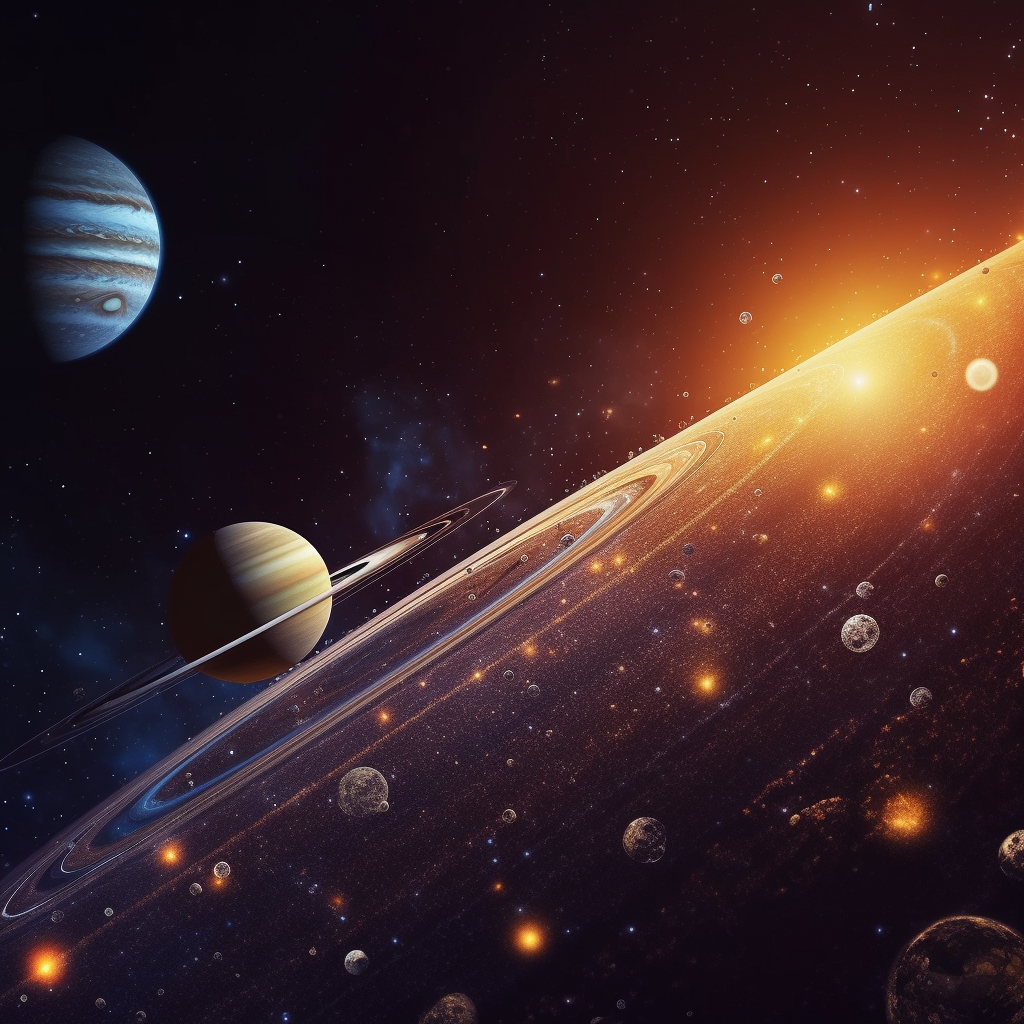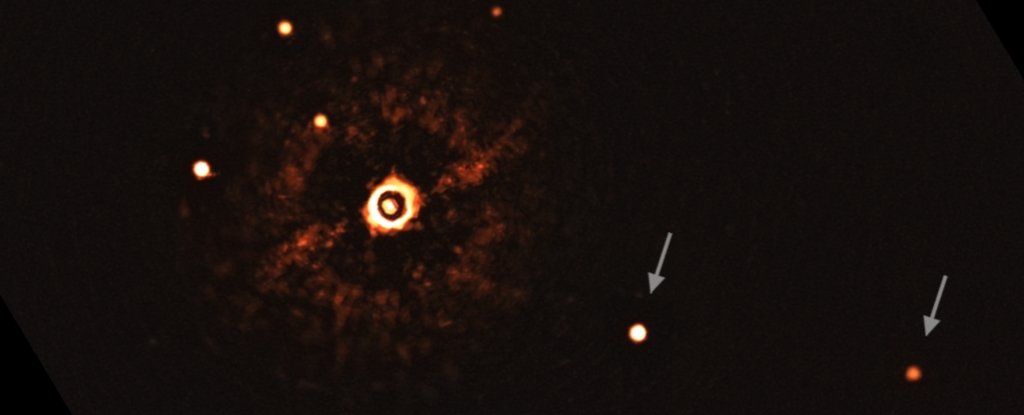Astronomer captured first direct image of another solar system in a ground breaking new discovery.

In the grand cosmic tapestry, woven with the threads of stars and galaxies, a profound revelation has emerged. We have beheld, for the first time, a direct image of another solar system.
Table of Contents
A Vision of the Cosmos
As we gaze upon this first direct image of another Solar System, we are reminded of the words of the great Carl Sagan, who once said, “The universe is a pretty big place. If it’s just us, seems like an awful waste of space.” Indeed, our journey to understand our place in the cosmos has taken a monumental leap forward, as we uncover new mysteries and examine the characteristics of TYC 8998-760-1 as seen in the first direct image of another Solar System.
The Eye of God, the nebula that observes us from 650 light years away
Our Universe Is Result of a Lab Experiment by Aliens: Harvard Professor

First direct image of another “Solar System”: A Distant Mirror
The European Southern Observatory’s Very Large Telescope (VLT) has captured first direct image of another Solar System, a feat that was once the stuff of dreams. It resides in the constellation of Musca, approximately 300 light-years away from our pale blue dot. This system, known as TYC 8998-760-1, bears a striking resemblance to our own, albeit a much younger version.
The star at the center of this distant system is similar in mass to our Sun but only 17 million years old – an infant in the grand scheme of cosmic time. This young sun is encircled by two gas giant planets, one akin to Jupiter and the other resembling Saturn. As we peer into the depths of space at this distant reflection, we are reminded of our own cosmic infancy.
The Dance of Worlds
The planets orbiting this distant star are designated as TYC 8998-760-1b and TYC 8998-760-1c. The former, a Jupiter-like gas giant, is located at a distance of 160 astronomical units (AU) from its parent star – a separation far greater than that between our Sun and Neptune. This behemoth is estimated to possess a mass of 14 times that of Jupiter, placing it within the realm of the so-called “brown dwarfs” – celestial objects that straddle the boundary between the largest planets and the smallest stars.
The latter planet, TYC 8998-760-1c, is a Saturn-like world, orbiting at a distance of 320 AU from the star. With a mass six times that of Jupiter, it is another colossal presence within this young solar system. The intricate dance of these worlds around their central sun offers a tantalizing glimpse into the early stages of planetary formation.
A Window to the Past
This remarkable first direct image of another Solar System provides a window to the past, a view of what our own solar system might have looked like in its infancy, some 4.6 billion years ago. It is a testament to the power of human curiosity and our ever-evolving understanding of the cosmos. With each new discovery, we continue to unlock the secrets of the universe and find new ways to answer the eternal question of our place in the grand cosmic scheme.
The first direct image of another Solar System reinforces the notion that our solar system is but one of countless others in the vast expanse of the universe. It is a humbling reminder that we are not alone in our cosmic neighborhood, and that the potential for other life-bearing worlds is vast.
The Search for Other Worlds
Armed with this newfound knowledge, we set our sights on the search for other worlds, and the possibility of life beyond our solar system. The detection of exoplanets – planets orbiting stars other than our Sun – has become a burgeoning field in recent years, yielding thousands of new discoveries. This cosmic census of other worlds has revealed a diverse array of planets, from gas giants like those of TYC 8998-760-1 to smaller, rocky worlds that could potentially harbor life.
As our understanding of planetary formation and the myriad conditions necessary for life expands, so too does our appreciation for the vastness and complexity of the cosmos. We endeavor to not only find other worlds but also to understand their potential for life, in the hope that one day we may find fellow travelers on this cosmic journey.
Towards a Cosmic Family
The first direct image of another solar system is a profound achievement in our understanding of the universe. It offers a tantalizing glimpse into the early stages of planetary formation and reaffirms the notion that our solar system is not unique. As we continue to explore the depths of space, we remain ever vigilant in our search for other worlds and the possibility of life beyond our own pale blue dot.
In the words of Carl Sagan, “The cosmos is all that is or was or ever will be.” As we continue to push the boundaries of our knowledge and understanding, we take our place as cosmic explorers, striving to uncover the mysteries of the universe and, ultimately, our place within it.
Reference(s):

